With the ropes on K2 at Camp 2, it’s easy to get excited about early progress, but this is normal for past winter expeditions. The real challenges start above Camp 2 and when wind and snow lockdown teams for days, if not weeks, on ends. Let’s take a step back to review the Abruzzi Spur route, plus the history of winter attempts and what lesson can be gleaned from their experiences.
K2 Winter Background
K2 is the world’s 2nd highest mountain at 28,251’/8611m, located in northwest Pakistan, about 30 miles from India’s border. K2 is called the Mountaineer Mountain and the Savage Mountain for its deadly and brutal reputation.
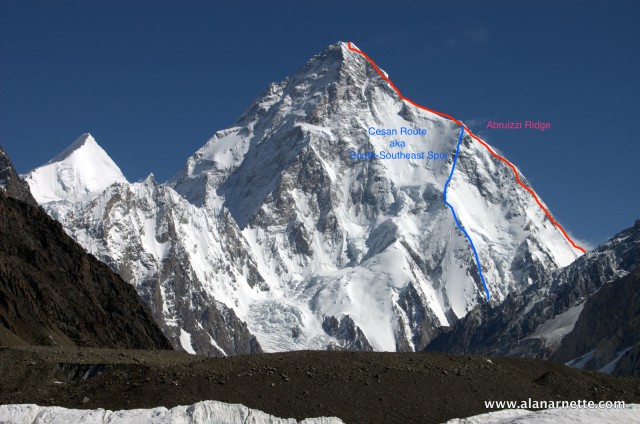
The most significant obstacle K2 climbers will encounter is the weather. Even in the summer, it is unpredictable, harsh, and deadly. High winds have blown climbers off the mountain, avalanches have killed climbers in their tents at high camps, and some have disappeared. But the weather is the wild card. They will need winds under 60 kph/40mph for a safe ascent.
Climbing K2
While there are multiple routes on K2, including the Chinese side, most successful summits used the Abruzzi Spur. On this route, numerous camps are established depending on conditions. The Česen and Abruzzi routes merge at Camp 3. The Česen route is steeper and avalanche-prone than the steep and rockfall-prone Abruzzi route.
- Base Camp: 17,500ft/5334m
- Advanced Base Camp: 18,650ft/5650m
- Camp 1: 19,965’/6050m
- Camp 2: 22,110’/6700m
- Camp 3: 23,760’/7200m
- Camp 4: 25,080’/7600m
- Summit: 28,251”/8611m
From my summit of K2 in 2014, this is a brief description of the Abruzzi route. The climbing starts steep from start to finish as in 40-degree minimum snow slope angles and near-vertical rock or ice walls.
BC to ABC: 18,650ft/5650m, 2-3 hours, 2150’/316m
Leaving Base Camp, it’s a couple of hours to reach Advanced Base Camp where the real climbing begins. The route is on the glacier so there can be crevasses. A short Icefall stand between the climbers and ABC. While short, it can be mysterious until a fixed rope is installed to show the route. Climbers have been known to be injured in this area.
ABC to C1: 19,965’/6050m, 4-6 hours, 1315’/400m
From ABC to C1, it is a long snow slope with some rock. While not difficult, it can test climbers as it will be their first time between 5,500 and 6,000-meters. This area can experience some avalanches. This is the first time climbers internalize how steep K2 is.
C1 to C2: 22,110’/6700m, 5-7 hours, 2145’/650m
From C1 to C1, it becomes even steeper, with angles approaching 45-degrees. The rock climbing starts immediately upon leaving C1. The crux of the route is House’s Chimney – a 100′ near-vertical rock crack at 21,500′ – just below C2. Most climbers will use rock climbing techniques in the chimney, so those with little experience will find it very difficult. For some, this might be their “summit”
C2 to C3:23,760’/7200m, 2-4 hours, 1650/500m
The Black Pyramid consumes the entire route from C2 to C3 and is the technical crux, with sustained rock climbing ranging from high class 4 to mid 5’s. Again, climbers will leverage years of rock climbing experience, at altitude, in the Pyramid. Lacking extensive rock climbing experience at altitude, some may struggle. I found this to be the most fun of the entire route. Rockfall is frequent in this section so climbers must be cautious and respectful of others on the route.
C3 to C4 aka High Camp: 25,080’/7600m, 3 hours, 1320m/400m
C3 to C4 is a short snow climb, but the angle is still very steep – 50 degrees – you don’t want to fall. This section may be the most avalanche-prone part of this route, depending on the year. From C4, you can see the Ice Serac plus the summit. It’s during this section that climbers finally feel they might summit K2.
The Traverse and Summit: 28,251”/8611m, 10-16 hours round trip, 3171’/1011m
This is the longest day of the ascent with a huge gain. Leaving C4 or High Camp, it starts on another steep snow slope, maybe 40 degrees, then hits the Bottleneck. We avoided the Bottleneck in 2014 since it was filled with rock and giant ice blocks and took a right-hand variation onto a large buttress still well underneath the Ice Serac. This change was safer concerning the gulley, aka Bottleneck but put us under the Serac longer.
The Traverse past the Bottleneck was unrelenting but only about 500 meters in total distance. One exposed section required using your crampon front points dug into the vertical ice wall to support your weight while maintaining balance using the fixed rope at your chest. But most of the traverse allowed for full purchase with crampons. From the end of the traverse, it was another 2 hours to climb more steep snow slopes at 50-60 degree angles to the summit.
It was this section where the altitude showed it’s head.
Descent
Most teams try to descend to at least Camp 3 if not Camp 2 after the summit depending on what time they topped out, which is normally around 9:00 am these days. Some will go all the way to ABC, but that’s rare. The descent is a time where mistakes can be deadly and every rappel and anchor must be double-checked before loading.
K2 History
The first attempts began in 1902 by Brit Aleister Crowley. But it was the Duke of Abruzzi who made the most valiant attempts in the early 1900s, thus named the ridge most popular used today, the Abruzzi Spur. The first summit of K2 was on July 31, 1954, by Italians Lino Lacedelli and Achille Compagnoni.
K2 has seen between 450 and 500 summits (records are vague) compared with over 10,000 on Everest. K2 can go for years without a summit. For example, after 2012, there have only been summits in 2014, 2017, and 2018. The best year ever for K2 was in 2018, with over 60 total summits. Over 80 climbers have died on K2. Eleven died in 2008, including my friend Gerard McDonnell.
K2 has a unique reputation for women climbers. Before 2014, of the nine women who have summited, five have died – 3 descending from K2’s summit and two on other 8,000m peaks. The sixth woman to climb K2 in 2004, Basque climber Edurne Pasaban, was the only one of four still alive until 2014. Other K2 female summiters alive today include Norwegian climber Cecilie Skog who summited in 2008, Nives Meroi from Italy, and Austrian climber Gerlinde Kaltenbrunner. They summited from the north side of K2 in 2010.
In recent years, K2 has been kinder to female climbers with six summits in 2014, including the Nepali women’s team (Oasang Lhamu Sherpa, Maya Sherpa, and Dawa Yangzum Sherpa); Chris Burke (New Zealand), Luo Jing (China), Tamara Lunger (Italy) and Vanessa O’Brien (US/UK) in 2017. There are at least two women in 2020/21.
Winter Attempts
There have been few winter attempts due to the difficulty and financing involved. Traditionally, it has been international teams lead by the Russians or the Poles with decades of high-altitude winter climbing experience. And as of December 2020, there has been no winter summit. The highest ever reached in winter was reportedly 7600m
First K2 Winter Expedition 1987-88
An international team of 13 Poles, 7 Canadians, and 4 Brits made the first attempt on K2 via Abruzzi Ridge. As would become the typical pattern, low camps went in early but progress stalled at the higher altitudes. It wasn’t until March 2 that Camp 3 was established at 7300 meters. Then high winds began to take their toll, and members experienced frostbite resulting in canceling the entire expedition.
To further illustrate the weather concerns, this expedition only had ten days of ‘good’ weather in the three months they spent at Base Camp.
International Expedition 2002/03
In the winter of 2002/3, Polish alpinist legend Krzysztof Wielicki lead a small team of four members from Kazakhstan, Uzbekistan, and Georgia. They arrived in mid-December, planning to climb via the North Ridge. Again, the lower camps were set-up in short order, and by January 20 they had reached 6750m.
But discourse within the team caused the Eastern European members to leave except for Kazakh climber Denis Urubko. They reached Camp 4 at 7650m in mid-February and planned a summit attempt on February 21. However, one member developed cerebral edema canceling that attempt, and soon, they canceled the entire expedition.
When the expedition ended on February 28, 2003, Krzysztof Wielicki declared, “The mission of ascending the peak has not ended but rather been suspended. I will not give any dates, but I assure you that I will return to K2. One does not combat a mountain; one struggles against adversities. These adversities include snow, hurricane winds, and exhaustion.”
Russian Attempt 2011/12
In the winter of 2011-12, an attempt was made by a large and robust Russian team on the Abruzzi Ridge route. The group consisted of nine climbers. They began at the end of December and quickly established Camps 1 and 2 at 6050m and 6350m, respectively. By January 25, they had reached 7000m.
High winds hit the mountain in early February, and one member, Vitaly Gorelik, suffered from frostbite and pneumonia. The poor weather prevented an evacuation, and Vitaly died in BC on February 6, resulting in canceling the entire expedition.
In 2014/15, Denis Urubko planned an expedition from the Northside, but China’s politics stopped the permit process.
Polish 2017/18 Attempt
Krzysztof Wielicki again to lead a Polish National Winter Expedition of 13 climbers in December 2017. The team was fraught with discontent and eventually abandoned the attempt after reaching 7400 meters on the Abruzzi Spur. Denis Urubku did a solo summit push and reportedly reached 7600 meters before harsh conditions turned him back.
Nepali/International 2019/20 Attempt
Mingma Gyalje Sherpa made an ill-fated winter attempt last year with Icelander John Snorri Sigurjonsson, plus several Sherpas. Mingma said they underestimated how difficult the winter conditions would be, plus there was strife amongst the team. Mingma had summited K2 in the summers of 2014 and 2017.
Why Winter Team Don’t Summmit
In looking at the history of winter K2 attempts, there a few reasons that stand out that prevented a summit:
- Winds: Everyone expects bone-chilling cold, but winds above 60 kph/40mph bring everything to a halt. Many seasons these gale-force winds came and never left, stopping all progress. We’ll see of 202/21 is any different.
- Illness: Frostbite, HAPE, and HACE seem to be prevalent in the winter expeditions, even death.
- Inadequate Preparation: A catch-all category for not bringing enough ropes to proper clothing or appropriate food. Over the years, teams have gone to K2 better prepared, but the occasional oversight ends an effort. Also, climbers must be beyond the best shape of their lives; they must be in “K2-Shape” There are long days of relentlessly steep and technical climbing that saps away any remaining strength. The extreme cold amplifies this challenge. Thus if a climber goes to K2 inadequately physically prepared, the difficulty is magnified.
- Poor Teamwork: This is surprising, but to attempt K2 in the winter takes a powerful personality. It is not surprising that these personalities can clash, especially amongst the world-class climbers who each believe their method is the best. It takes strong leadership to hold them together; however, even some of the best leaders couldn’t manage the wide range of egos.
- Underestimation of the Challenge: K2 is damn hard to climb in the best of conditions. Add in extreme cold, high winds, inadequate rest, weeks upon weeks in harsh, arctic-like conditions above 5,000-meters, a recipe develops that conspires against the best climbers and teams. To summit, any 8000-meter mountain in winter requires skill, experience, and luck. To go in with blind faith that everything will “work-out” suggests a climber lacks the proper expertise to understand the challenge ahead.
Let’s hope the 2020/21 leaders and climbers have studied these past expeditions, learned from their experiences, and can set a record or two while honoring those who they climb on their shoulders today. With so many large egos on K2 this winter, it will be interesting to see who steps aside to let others summit, if they do.
Climb On!
Alan
Memories are Everything

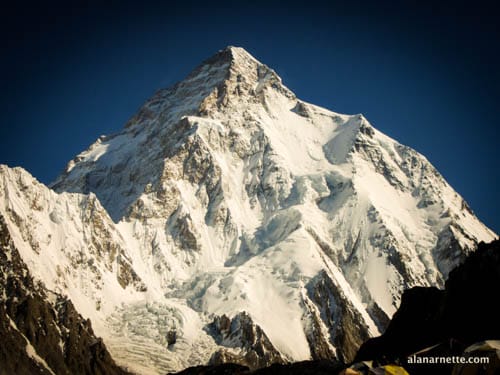

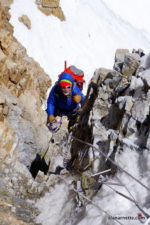
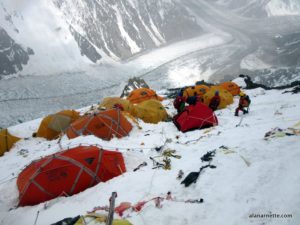
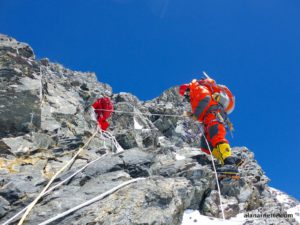
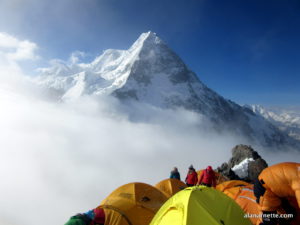
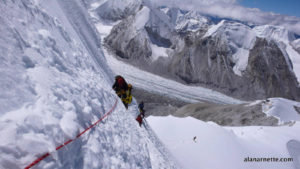
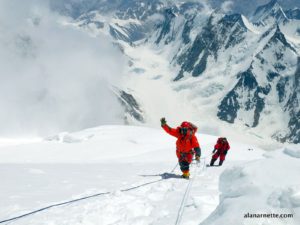
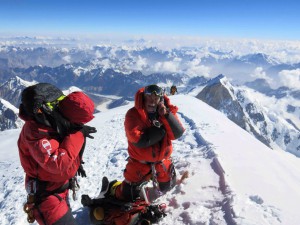
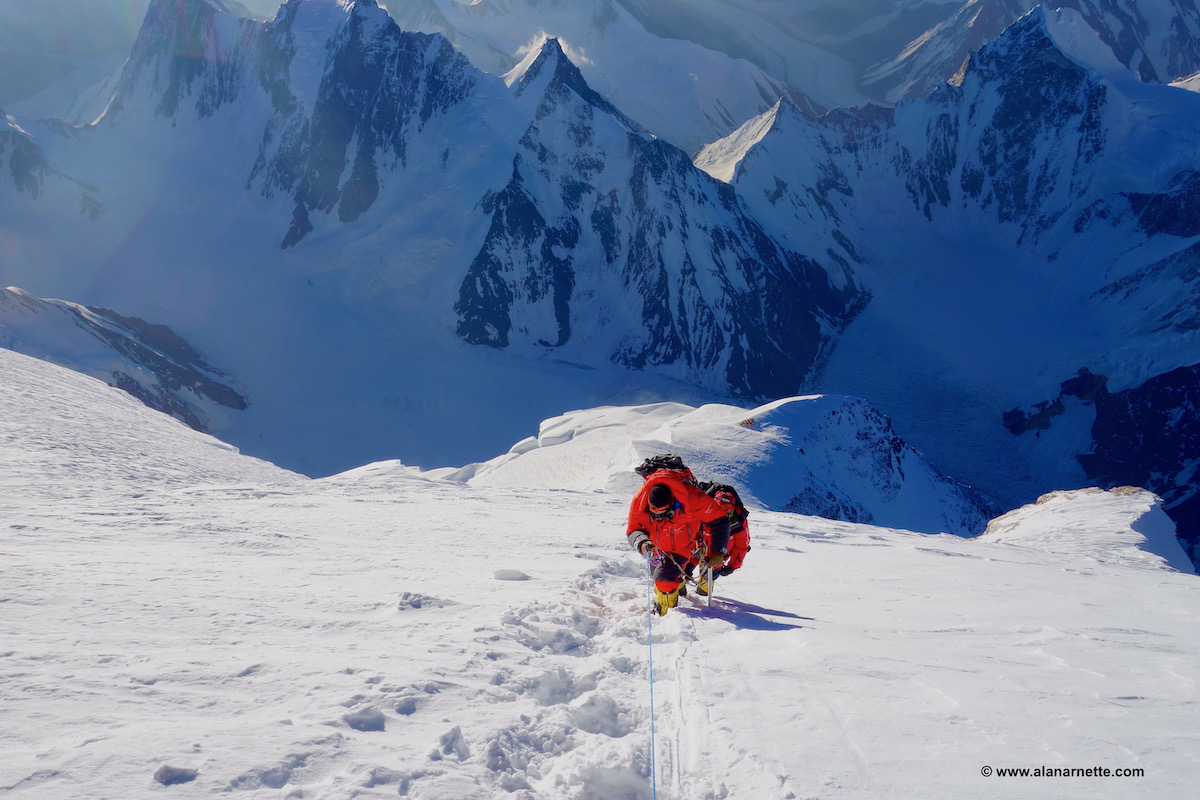

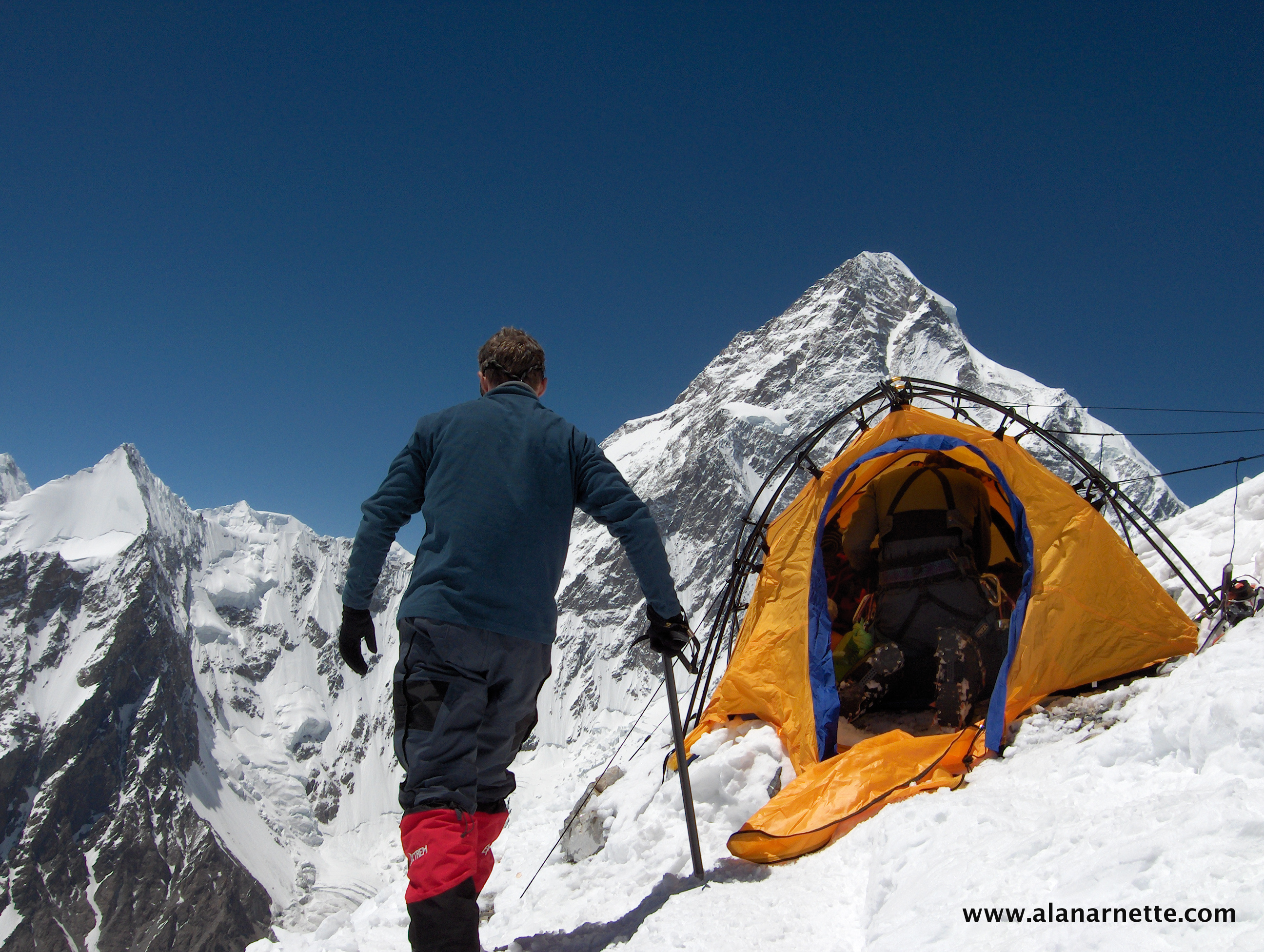
One thought on “K2 Winter on the Abruzzi”
Happy Holidays Alan.
Thank you for the blog updates.
Comments are closed.